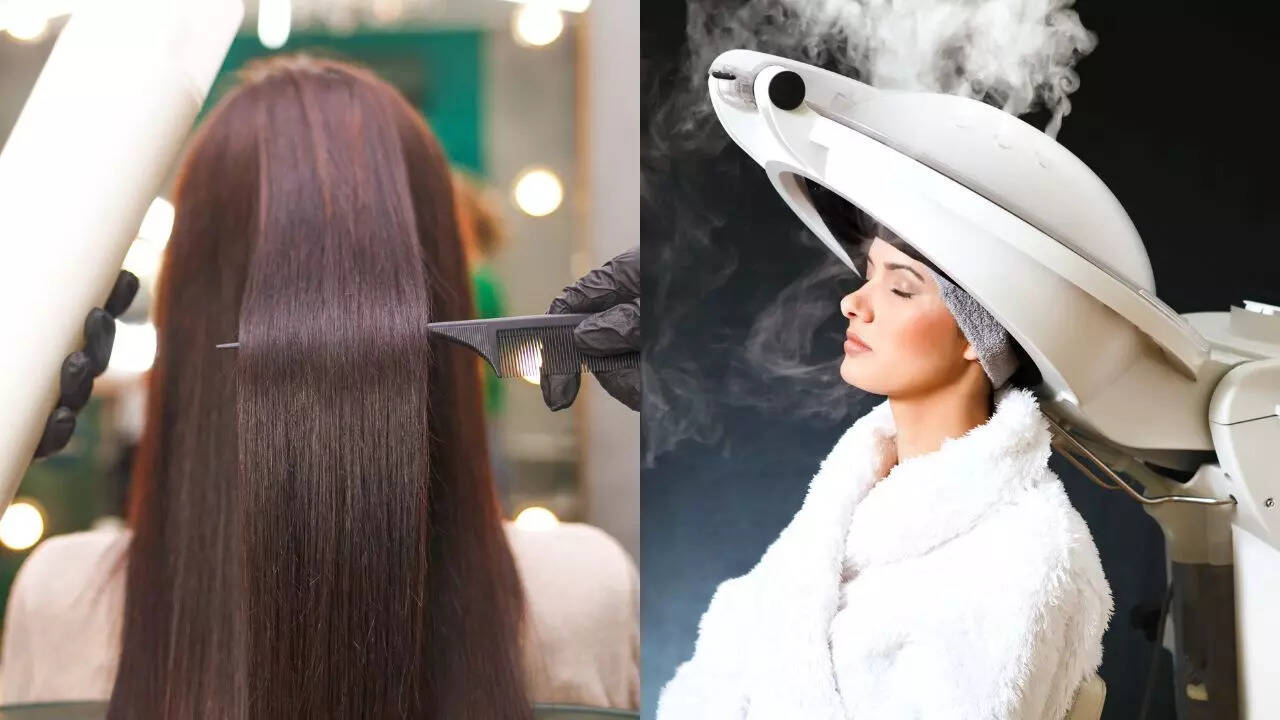
How to choose the right hair protein for your hair type?
Many women seek a lasting solution that restores smoothness and natural shine without damaging their hair. With the wide variety of hair protein treatments available today, one crucial question arises:
Which protein treatment is right for my hair type?
In this complete guide, we’ll explore the science behind hair protein treatments and how to select the ideal formula for your hair. We’ll also highlight professional-grade options available through Belas Store, designed for every hair texture and condition.
What is hair protein and why does your hair need it?

Hair protein primarily keratin, collagen, and amino acids forms the structural foundation of each hair strand.
Over time, frequent heat styling, coloring, and environmental exposure deplete this natural protein, leaving hair dry, brittle, and frizzy.
A hair protein treatment helps to rebuild this lost structure by replenishing and sealing nutrients into the hair shaft.
Its key benefits include:
-
Repairing internal fiber damage
-
Reducing frizz and tangles
-
Enhancing shine and elasticity
-
Protecting against breakage and dryness
The key is to choose a formula that matches your hair’s specific needs not all proteins work the same way.
How does a hair protein treatment work?
Protein treatments work by filling gaps in the hair shaft and coating the outer cuticle with a smooth protective layer.
The professional formulas available at Belas Store contain powerful yet gentle ingredients like:
-
Plant-based amino acids
-
Natural oils such as argan, macadamia, and jojoba
-
Marine collagen
-
Glycerin and hydrolyzed wheat proteins
When sealed using controlled heat, these compounds bond with the hair fiber, improving strength, texture, and shine without harsh chemicals.
Types of hair protein based on hair type
Each hair type has different structural needs. Choosing the right protein formula ensures optimal results.
Here’s a breakdown to guide your selection:
|
Hair Type |
Main Need |
Ideal Protein Type |
Example from Belas Store |
|
Normal Hair |
Balanced smoothing and shine |
Sleeker Plus Ultra Control Hair Protein – For Normal Hair |
Restores softness and vitality without over-straightening |
|
Blonde or Dyed Hair |
Gentle repair and color protection |
Sleeker Plus Ultra Control Violet Hair Protein – For Blonde/Dyed Hair |
Neutralizes brass tones and protects color brightness |
|
Dry and Damaged Hair |
Deep moisture and intensive repair |
Aya Brazil Glossy Perfect Kit – 3 Steps |
Multi-step treatment for restoring elasticity |
|
Severely Damaged Hair |
Intensive fiber reconstruction |
Oil Therapy NCC Kit – 3 Steps |
Deeply nourishes and rebuilds internal structure |
Each of these protein systems is designed to target the hair’s needs precisely from hydration to structural repair while maintaining long-lasting smoothness.
How to choose the perfect protein for your hair
Selecting the right protein treatment depends on three critical factors:
1. Assess your hair condition
Before choosing a product, evaluate:
-
Is your hair natural, colored, or chemically treated?
-
Does it feel dry, frizzy, or limp?
-
Is your scalp sensitive or balanced?
For colored or highlighted hair, opt for a violet-based protein formula like Sleeker Plus Violet, which tones brassiness while maintaining strength.
2. Balance between strength and moisture
A strong protein without hydration can make hair stiff.
Choose formulas containing:
-
Hydrolyzed Keratin – repairs internal structure
-
Collagen – adds flexibility
-
Glycerin or Panthenol – restores moisture during treatment
Sleeker Plus Ultra Control products balance both strength and softness, ideal for long-lasting results.
3. Avoid harsh ingredients
Always select a formula that is formaldehyde-free, sulfate-free, and sodium chloride-free.
These compounds can strip the hair and reduce treatment longevity.
Oil Therapy products are formulated with organic acids and cold-pressed oils to preserve the hair’s integrity while delivering a smooth, frizz-free finish.
How to apply a hair protein treatment – step by step

-
Wash the hair with a clarifying shampoo.
-
Dry using the dryer.
-
Divide the hair into quadrants. Apply Sleeker Plus Ultra Control Mask evenly over the entire length of the strands(while keeping a 1cm distance from the root), strand by strand, sliding and massaging them with the fingers and the comb towards the ends.
-
Leave the protein on your hair to act for 60 minutes, then rinse to remove only 30% of it.
-
Using a professional flat iron, straighten the hair in very thin sections (12–15 passes per strand) to activate the treatment.
Note: While applying the product, make sure it doesn’t reach the root. After treatment, your hair will look smoother, shinier, and easier to style for up to six months.
Post-protein care: essential steps to maintain the result
Proper maintenance is key to keeping your hair healthy and glossy after treatment.
Here’s a simplified post-protein care routine using products available at Belas Store:
|
Product |
When to Use |
Benefit |
|
Sleeker Magic Spray |
After washing and before heat styling |
Protects from heat and adds natural shine |
|
Dream Care |
On dry or damp hair after styling |
Smooths ends and reduces breakage |
|
Color Care |
For colored or bleached hair |
Protects color and enhances radiance |
Following this simple routine will help you preserve softness, manageability, and the sleek look of your protein treatment for months.
Signs your hair needs a protein treatment

-
Dullness and loss of shine
-
Split ends and breakage
-
Tangling or rough texture
-
Persistent dryness even after conditioning
-
Excessive frizz or lack of elasticity
If two or more of these apply, your hair likely needs a protein-based restorative treatment.
Frequently asked questions about hair protein
Is protein suitable for all hair types?
Yes, as long as you select the appropriate formula fine or colored hair requires a gentler blend, while coarse or curly hair may need stronger reconstruction.
How often should I repeat the treatment?
Every 4–6 months is ideal to maintain results without overloading the hair with protein.
Does hair protein cause hair loss?
No. When applied correctly using safe, formaldehyde-free formulas, it strengthens rather than weakens the hair.
Can I color my hair after protein treatment?
It’s best to wait at least two weeks after the treatment to maintain color vibrancy and ensure no interference with the coating.
What’s the difference between hair protein and hair botox?
Protein rebuilds internal structure and reduces frizz, while botox focuses more on hydration and filling porous areas of the fiber.
Can I use oils after protein?
Yes, but apply only small amounts to the ends to avoid disrupting the protein seal.
Conclusion
Choosing the right hair protein for your hair type is the foundation of achieving long-lasting smoothness, shine, and strength.
Start by understanding your hair’s condition, then choose a product that combines nourishment with protection.
All the professional formulas mentioned above from ultra-control proteins to nourishing serums are available at Belas Store, where each range is carefully designed to suit every hair type and need.


